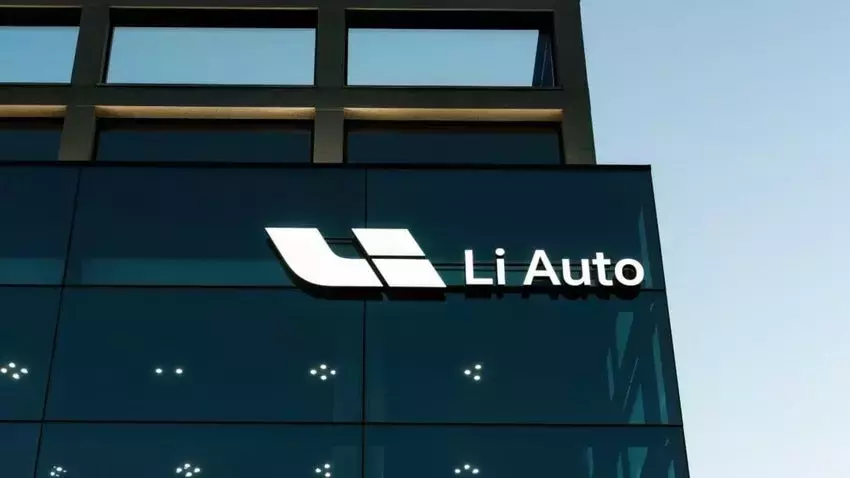
In a challenging period, Li Auto, a notable Chinese electric vehicle manufacturer, has confronted a substantial downturn in its fiscal third-quarter 2025 performance. The company's financial results indicate a sharp decrease in revenue and an adjusted net loss, missing expert predictions. This difficult situation stems from a combination of factors, including a significant drop in vehicle shipments, narrowed profit margins due to a substantial product recall, and heightened competition within the automotive sector. These combined pressures underscore the hurdles Li Auto faces in sustaining its financial health and market position.
Li Auto Navigates Financial Headwinds and Market Dynamics in Q3 2025
On a somber Wednesday morning, November 26, 2025, Li Auto Inc. witnessed a notable dip in its stock value as the Chinese electric vehicle giant unveiled its fiscal third-quarter 2025 financial outcomes. The report detailed a significant year-over-year decrease across key financial metrics, driven by a confluence of factors including diminished vehicle deliveries, intensified margin compression, and considerable expenditures related to a crucial vehicle recall.
During this period, the company's quarterly revenue plummeted by 36.2% from the previous year, settling at 27.4 billion Chinese yuan (approximately $3.80 billion USD). While this figure slightly surpassed the consensus analyst estimate of $3.76 billion, the adjusted net earnings per American Depository Share (ADS) recorded a loss of 0.36 yuan (5 cents), missing the anticipated 4-cent gain by a notable margin.
Vehicle sales alone experienced a downturn of 37.4%, reaching $3.6 billion, primarily influenced by a reduction in delivery volumes. Li Auto reported delivering 93,211 vehicles, a stark 39.0% decline from the 152,831 units sold in the corresponding period of the prior year, and also falling short of the 111,074 units delivered in the second quarter of 2025.
Margin pressures were particularly pronounced, with vehicle margin contracting by 540 basis points to 15.5%. Had it not been for the estimated costs associated with the Li MEGA recall, this figure would have stood at 19.8%. Similarly, the gross margin decreased by 520 basis points to 16.3%, adjusting to 20.4% when factoring out the recall's impact. The company also registered an adjusted operating loss of 912.5 million yuan ($128.2 million), a significant shift from the adjusted operating income of 4.5 billion yuan reported a year earlier. Furthermore, an adjusted net loss of 360.3 million yuan ($50.6 million) marked a substantial reversal from the adjusted net income of 3.84 billion yuan in the previous year.
Despite these challenges, Li Auto concluded the quarter with a robust cash and equivalents position of $13.9 billion. However, the company faced a net operating cash outflow of 7.4 billion yuan ($1.0 billion), contrasting sharply with the 11.0 billion yuan net operating cash inflow from the prior year and representing an expansion from the 3.0 billion yuan outflow in the preceding quarter. Free cash flow also turned negative, reaching 8.9 billion yuan ($1.3 billion), compared to a positive 9.1 billion yuan in the same period last year.
As of September 30, 2025, Li Auto maintained an extensive operational footprint, boasting 542 retail stores across 157 cities, complemented by 546 service centers, authorized body and paint shops in 225 cities, and 3,420 supercharging stations equipped with 18,897 charging stalls.
Company executives addressed these developments, with Chairman and CEO Xiang Li highlighting the strong combined orders for the Li i8 and Li i6 models, surpassing 100,000 units, and the impressive 91% monthly usage rate of the company's VLA Driver large AI model in October. Concurrently, CFO Tie Li underscored the quarter's headwinds, citing heightened market competition, supply chain limitations, and the costs imposed by the recall.
Looking ahead to the fourth quarter of 2025, Li Auto projects revenue to be in the range of 26.5 billion to 29.2 billion yuan ($3.7 billion to $4.1 billion). This forecast signifies a year-over-year decline of 40.1% to 34.2%, falling significantly below the analyst consensus estimate of $5.22 billion. The company also anticipates vehicle deliveries to be between 100,000 and 110,000 units, indicating a year-over-year decrease of 37.0% to 30.7%.
The market reacted swiftly to these announcements, with LI stock trading lower by 2.40% at $17.88 in premarket activity on Wednesday.
The recent financial outcomes from Li Auto underscore the volatile and intensely competitive nature of the electric vehicle industry, especially within the dynamic Chinese market. This period serves as a crucial reminder for emerging automotive companies about the profound impact of product quality and effective recall management on consumer trust and financial stability. It highlights the intricate balance required to innovate, scale production, and maintain profitability amidst rapid technological advancements and fluctuating demand. For investors, these developments emphasize the importance of scrutinizing not just growth potential, but also the robustness of operational frameworks and risk mitigation strategies in high-growth sectors. Ultimately, Li Auto's journey reflects the continuous evolution and inherent challenges faced by disruptors in established industries, where market leadership is constantly contested and resilience is paramount.
